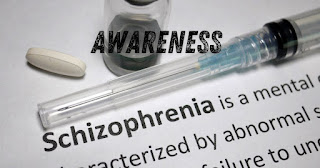Schizophrenia Awareness Month: Understanding and Supporting Mental Health
Schizophrenia is a chronic brain disorder that significantly impacts a person’s thoughts, emotions, and behaviors. It is a condition surrounded by misconceptions and stigma, which Schizophrenia Awareness Month aims to address. Celebrated with the color silver and observed prominently on July 25, this awareness month plays a crucial role in shedding light on the realities of living with schizophrenia, promoting early intervention, and advocating for improved mental health services.
 Schizophrenia Awareness Month Schizophrenia Awareness Month |
What is Schizophrenia?
Schizophrenia is a severe mental health condition characterized by distortions in thinking, perception, emotions, language, sense of self, and behavior. It often manifests as hallucinations (hearing or seeing things that are not there), delusions (false beliefs), and cognitive issues (disorganized thinking and memory problems). These symptoms can significantly impair daily functioning and quality of life.
When is Schizophrenia Awareness Month?
Schizophrenia Awareness Month is celebrated in July, with a particular focus on July 25. This day is dedicated to raising awareness about the condition, reducing stigma, and fostering a better understanding of the challenges faced by those living with schizophrenia.
What is the Color for Schizophrenia Awareness Month?
The color silver represents Schizophrenia Awareness Month. Silver symbolizes clarity and hope, reflecting the campaign’s goal to illuminate the truth about schizophrenia and support those affected by it.
 |
| Silver Ribbon, Strong Minds: Schizophrenia Awareness |
Show your support for Schizophrenia Awareness Month with our silver ribbon t-shirt. Featuring a bold design that symbolizes hope and understanding, this shirt is perfect for raising awareness and reducing stigma. Wear it on July 25 and throughout the year to promote better mental health services and early intervention.
 |
| Schizophrenia Awareness Day |
What are the Symptoms of Schizophrenia?
The symptoms of schizophrenia are typically divided into three categories: positive, negative, and cognitive.
- Positive Symptoms: These are symptoms that add behaviors or thoughts not generally present in healthy individuals, such as:
- Hallucinations
- Delusions
- Disorganized speech
- Disorganized or catatonic behavior
- Negative Symptoms: These involve the absence or reduction of normal behaviors or emotions, including:
- Affective flattening (reduced expression of emotions)
- Alogia (poverty of speech)
- Anhedonia (inability to experience pleasure)
- Avolition (lack of motivation)
- Cognitive Symptoms: These affect memory and thinking processes, such as:
- Poor executive functioning (the ability to understand information and use it to make decisions)
- Trouble focusing or paying attention
- Problems with working memory (the ability to use information immediately after learning it)
What are the Diagnostic Criteria for Schizophrenia?
The diagnosis of schizophrenia is based on criteria outlined in the Diagnostic and Statistical Manual of Mental Disorders (DSM-5). The key criteria include:
- Duration: Symptoms must persist for at least six months, with at least one month of active symptoms (or less if successfully treated).
- Core Symptoms: At least two of the following symptoms must be present, with at least one being from the first three:
- Delusions
- Hallucinations
- Disorganized speech
- Grossly disorganized or catatonic behavior
- Negative symptoms
- Social/Occupational Dysfunction: For a significant portion of the time since the onset of the disturbance, one or more major areas of functioning such as work, interpersonal relations, or self-care are markedly below the level achieved prior to the onset.
Schizophrenia is a complex and challenging condition, but awareness and education can make a significant difference. Schizophrenia Awareness Month encourages us to learn more, share stories, and support those affected by this disorder. By embracing the silver ribbon and participating in awareness activities, we can contribute to a more understanding and supportive world for everyone touched by schizophrenia.
